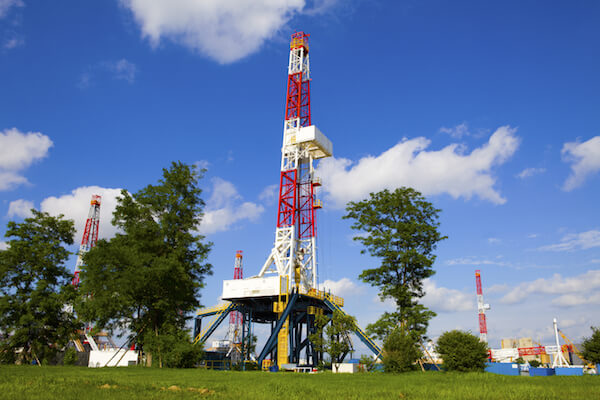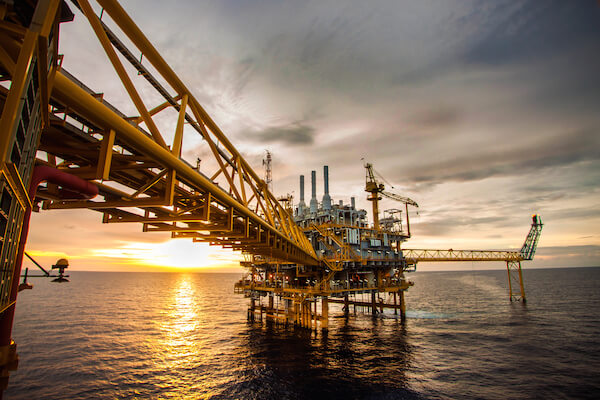Tag Archive for: security
Exxon Mobil Corp. is doubling down on Papua New Guinea, topping a rival offer for InterOil Corp., a gas explorer focused on the Southeast Asian nation.
The energy giant’s offer values InterOil at $2.5 billion, including debt, beating an earlier bid from Oil Search Ltd. and Total SA. Exxon already runs Papua New Guinea’s only liquefied natural gas terminal and buying InterOil, which has gas fields and a stake in a second gas export project in the country, would give it a new source of the fuel for its exports. Oil Search and Total have three days to decide whether to counter Exxon’s offer.
“This was widely expected by the market and looks at first glance to be in line with our estimates that Exxon’s bid would be 10 percent higher than the original Oil Search bid,” said Neil Beveridge, an analyst at Sanford C. Bernstein in Hong Kong. “The key question now is whether we see a counter-bid from Total and Oil Search.”
InterOil said Exxon is offering it a fixed price of $45 per share, and values the company at $2.5 billion, including $188 billion in net debt. As part of Oil Search’s $2.2 billion bid with Total in May, it offered 8.05 shares for each of InterOil’s, valuing InterOil’s share at $40.25.
The bid from Exxon also includes a higher initial so-called contingent-value right, offering $7.07 per share for each trillion cubic feet of likely gas reserves above 6.2 trillion found in InterOil’s Elk-Antelope fields, capped at 10 trillion cubic feet. Oil Search offered an additional $6.05 per share for each trillion cubic feet more than 6.2 trillion, with no cap.
Oil Search said in a statement it’s talking with Total about its options and that it’s entitled to a $60 million break-up fee, with 20 percent going to Total, if the deal doesn’t go through after InterOil changed its recommendation.
“InterOil has advised that it intends to make a change in its recommendation and enter into an Arrangement Agreement with ExxonMobil,” Oil Search said in a statement.
Exxon is targeting gas fields that hold enough reserves to supply the U.K. for three years. The company already operates the existing $19 billion PNG LNG gas-liquefaction plant in Papua New Guinea. InterOil and its partners have planned the nation’s second export project, Papua LNG. Oil Search is a shareholder in both ventures and has encouraged a tie-up to lower development costs.
Lower Cost
“ExxonMobil has submitted an offer to acquire InterOil Corporation, which we believe represents a superior proposal,” Exxon said in a statement.
Oil Search rose as much as 4.2% to A$7.27 in Sydney before trading at A$7.22 at 3:43 p.m. local time.
Papua New Guinea has lower costs than rival LNG sources, making it a more-attractive place to invest in an oversupplied market for the seaborne fuel. A deal for InterOil could speed up a boom in fuel sales from the nation, which began exporting LNG in 2014.
InterOil’s gas fields are closer to the coastal site of its proposed LNG plant and the pipeline that would feed it cuts through a less densely populated region than Exxon’s, which pipes its supply down from the country’s highlands, according to a presentation published on InterOil’s website.
Project Partners
“PNG’s lower costs are largely driven by the downstream. The cost of constructing the LNG facility is lower because labor is cheaper and site preparation is easier,” Matt Howell, a Perth, Australia-based research analyst for energy consultant Wood Mackenzie Ltd., said by e-mail. “In the case of Elk-Antelope, the fields are also nearer to the LNG facilities and the conditions in that area are a lot kinder, which lowers midstream and upstream costs.”
Oil Search is already a partner in both Exxon’s PNG LNG venture as well as Papua LNG. The Oil Search deal may save the country’s two projects as much as $3 billion and speed up development if they cooperate, according to Managing Director Peter Botten. After buying InterOil, Oil Search planned to sell 60 percent of the assets to Total.
InterOil’s appraisal of the fields found 10.2 trillion cubic feet of likely reserves at the end of 2015. Oil Search released results Friday of a separate analysis of those fields that estimated likely reserves at 6.4 trillion cubic feet. Oil Search said it would do a different analysis if it were to purchase InterOil that would include gas condensate volumes and another appraisal well that could unlock an additional 1 trillion to 2 trillion cubic feet of gas.
Exxon has pursued InterOil’s assets in the past. In May 2013, the energy explorer entered into exclusive talks to acquire a stake in InterOil’s Papua New Guinea discoveries, estimated at the time to hold the equivalent of 9 trillion cubic feet of recoverable gas. The talks collapsed later that year for undisclosed reasons.

For workers laboring on top of tall structures, the ability to self-rescue could mean the difference between life and death.
While transportation incidents represented the largest cause of U.S. workplace deaths, workers also face serious threats from falling. Fourteen percent, or 660, of the 4,821 U.S. worker fatalities in 2014 resulted from falls to a lower level of a facility, according to the U.S. Bureau of Labor Statistics (BLS).
Saint Paul, Minn.-based 3M is seeking to address this risk with its new line of fall protection products, including a safety harness, personal protection equipment, fall protection devices for tools and the latest ‘self-rescue device.
Being suspended in a harness puts pressure on the legs and can cause suspension trauma. This trauma can render them unconscious, making a rescue difficult, Steve Kosch, global product manager of 3M’s confined space and rescue division, told Rigzone in an interview at the Offshore Technology Conference earlier this month in Houston. The self-rescue device not only allows a trapped worker to free themselves; if they’ve already passed out, an extended pole can be used to unhook the carabiner and rescue them from heights.
“You don’t have to be at extreme heights to hurt yourself,” Kosch said. “Most countries, including the United States, require some kind of fall protection for six feet and higher.”
The number of workers who perished in a fall in 2014 was 11 percent higher than the total deaths by falls in 2013. In the 545 cases where the height of the fall was known, nearly two out of every three were falls from 20 feet or less, according to BLS.
The number of fatalities in the oil and gas extraction, mining and quarrying industry sector grew 18 percent to 183 in 2014 from 2013. The fatal injury rate in this sector also increased to 14.2 per 100,000 full-time equivalent workers. The number of fatal injuries in the oil and gas extraction industries reached 144 in 2014, a new high for the group.
The self-rescue device is attached to the dorsal webbing of the user’s harness, Kosch explained. Normal fall arrest equipment, such as a lanyard or self-retracting device, is attached to the D-ring on the self-rescue. If the worker falls, the lanyard or self-retracting device will arrest the fall. The person can then perform self-rescue by pulling up on the red tab on the release cord shoulder strap to expose the red pull handle. The worker then grasps the red pull handle and pull the release cord firmly to release the D-ring and start the descent. After they land on the ground and the release cord is pulled, the weight of the user pulls rope from the spool, which passes through the breaking system. The speed is controlled by the brake.
The device is not intended to replace existing rig scape systems that are required by American Petroleum Institute Association standard 54. Kosch noted that the Occupational Health and Safety Administration requires all employers to have a rescue plan in place when people are working at height and the risk of a fall exists. The device is intended for use by workers at height within a 100-foot distance from a lower platform or ground.
The self-rescue device was acquired by 3M as part of its acquisition last year of Capital Safety. 3M first entered the fall protection business eight years ago with its acquisition of Aearo Technologies Inc. Aearo operated SafeWaze, a fall protection company.

Scroll to top

 Fundamental factors to strengthen Pemex12 August, 2019
Fundamental factors to strengthen Pemex12 August, 2019 Offshore Project Development: The Road to First Oil26 July, 2019
Offshore Project Development: The Road to First Oil26 July, 2019
